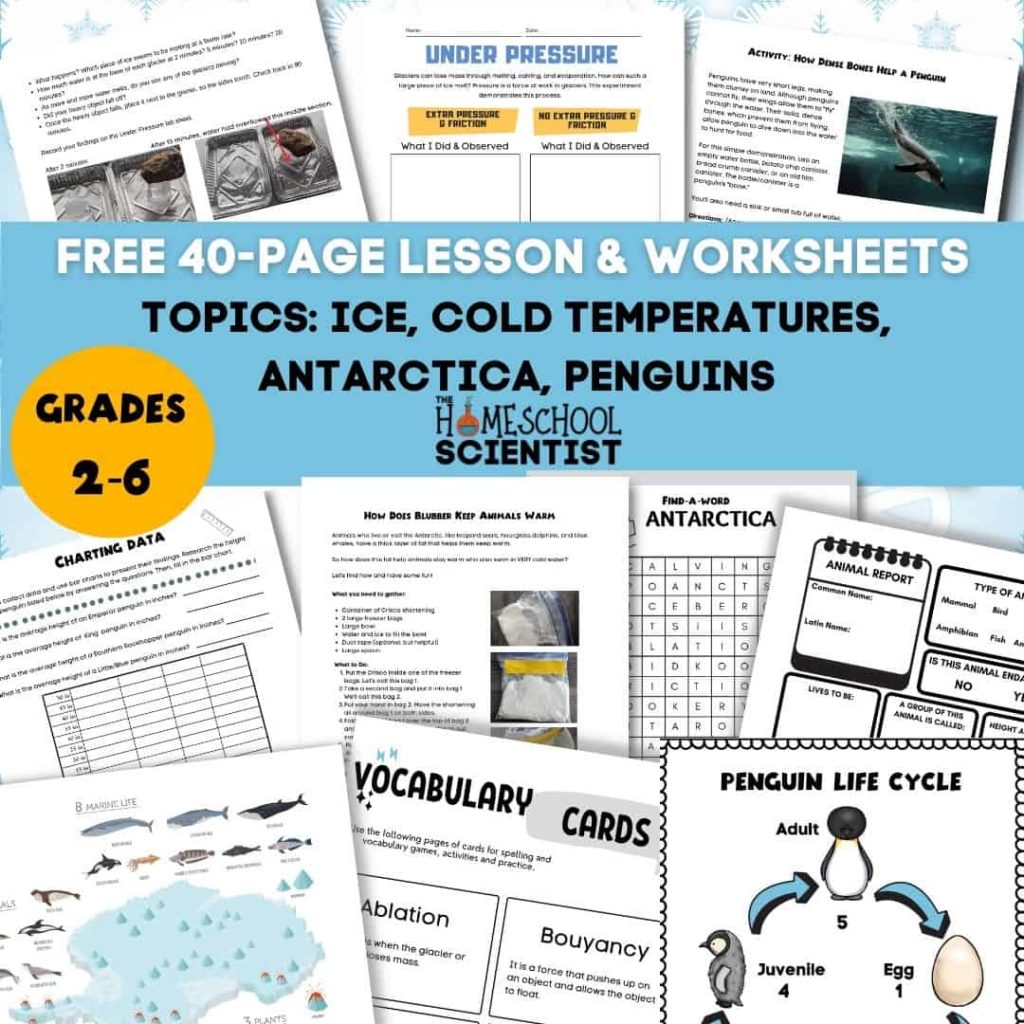Penguin Fun Facts & Hands-On Activity – Penguins That Live In Antarctica
Penguins may not look like typical birds, but they belong to the bird family. Like all birds, they are warm-blooded, lay eggs, and have feathers and wings.
Don’t forget to download the free 38-page lesson with experiments, worksheets, vocabulary flashcards, informational write-ups, and MUCH more. This can be used with multiple grades from first through seventh grade. Adjust it for your homeschool or classroom.
The link is at the bottom of this post.

Penguins that Live in Antarctica
The penguins that live in Antarctica include:
- Adelie penguin
- Chinstrap penguin
- Emperor
- Gentoo
- King
- Macaroni
- Rockhopper
However, penguins thrive in varying climates, not just Antarctica. Galapagos penguins are found on tropical islands at the equator. Other penguins have been found living on the beaches of South Africa. Emperor penguins live only on the ice of Antarctica.

There are 18 known species of penguins in the world, all of which live in the southern hemisphere. You may see some sources listing 17 species of penguins because some scientists believe there are two species of Rockhopper penguins – northern Rockhopper penguins and southern Rockhopper penguins. The two different Rockhopper penguins make the difference between 17 and 18 species.
These species include the:
- Snares penguin
- Galápagos penguin
- African penguin
- Adélie penguin
- Humboldt penguin
- Rockhopper penguin (Northern and Southern Rockhopper penguins)
- Emperor penguin
- Royal penguin
- Macaroni penguin
- Gentoo penguin
- Fiordland penguin
- Chinstrap penguin
- King penguin,
- Little blue/Fairy penguin,
- Yellow-eyed penguin
- Magellanic penguin
- Erect crested penguin.
Features and Behaviors of Penguins
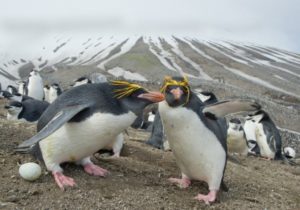
Penguins have very short legs, making them clumsy on land. Although penguins cannot fly, their wings allow them to “fly” through the water. Their solid, dense bones, which prevent them from flying, give them buoyancy, or the ability to float.
Penguins sometimes have to swallow rocks and pebbles. Scientists theorize that penguins swallow stones to either help weigh themselves down to dive deeper into the water, help them feel full, or aid in the breakdown of food for digestion.
Penguins spend most of their time in the water swimming, where they hunt krill, fish, and small crustaceans. Dense, scale-like feathers cover their skin, providing a waterproof coating and insulation. Their stiff flipper-like wings and wide feet allow them to be expert swimmers. They can swim at speeds of twenty-five miles per hour. Penguins can dive deep into the water and hold their breath for several minutes at a time.
Penguins build nests made of pebbles, mud, leaves, and sticks. Penguins will build their nests with other penguins to form a large grouping of nests. This grouping of nests is called a rookery.

Penguins are very attentive parents. They generally have one to two eggs at a time, which take two months to hatch. After the female has laid the eggs, the male takes over incubating them. He does this by holding them on top of his feet as protection from the cold. While the mother is away feeding for weeks, the father will fast (go without eating for days). He will stay on land with the other males, in large groups, protecting the eggs.
Penguins have a white belly and black back. This coloring allows them to camouflage and blend with their surroundings and protects their biggest predators— Leopard seals and whales. When a penguin is floating on its back in the water, seals and whales swimming under them cannot see the penguins because of the penguin’s black back. Each penguin breed has its unique coloring on its head, called a headband. While the Emperor penguin has orange and yellow patches near each ear, the Rockhopper penguin has yellow and black feathers which stick out from its head.
How Do Penguins That Live In Antarctica Keep Warm?
Penguins adapt to the cold regions in which they live. Their scale-like feathers provide insulation. In the following experiment we will feel how a pocket of air formed by their feathers can protect penguins from the cold.
How Do Penguins Keep Warm
Materials
- 3 Zip-close sandwich bag or pint-size storage bags
- Ice cubes to fill one of the storage bags
Instructions
- Fill one bag with ice and seal tightly.
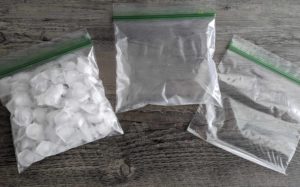
- Blow into a second bag filling it with air and seal. The third bag will remain empty.
- Place only the bag filled with ice in the palm of your hand. Can you feel the cold of the ice? Fill out Question 1 on the Lab Inquiry Sheet.
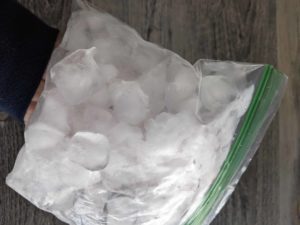
- Place the empty bag and put it flat in your hand. Place the ice bag on the empty bag. Can you feel the cold of the ice? Fill out Question 2 on the Lab Inquiry Sheet.
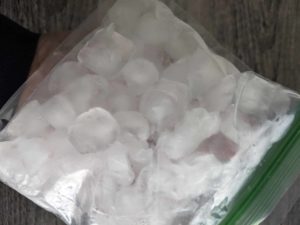
- Remove all of the bags from your hand. Place the bag filled with air onto the palm of your hand. Then place the ice bag on top of it. Can you feel the cold of the ice? Fill out Questions 3, 4, and 5 on the Lab Inquiry Sheet.
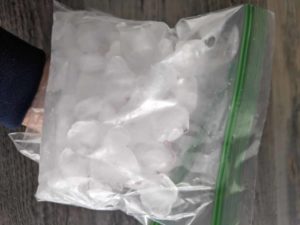
What Happened
It took the longest to feel the cold of the ice through the bag filled with air. Air is an insulator; this means it is good at stopping energy flow through them. So, the heat from the penguin’s body gets trapped in the layer of air trapped between their layer of feathers, protecting them from the cold temperatures of the wind, ice, and snow.
The warm temperature from your skin gets trapped in the plastic bag full of air, keeping a warm layer between your hand and the ice.
Notice the bag without air in it did not keep cold of the ice from coming through; in other words, it was not a good insulator.
Activity: Understanding How Bouyancy Helps Penguins
As mentioned before, penguins have dense bones to help provide additional weight and allow them to dive down into the water to hunt for food.
For this simple demonstration, use an empty water bottle, potato chip canister, bread crumb canister, or an old film canister. The canister is a penguin’s “bone.”
You’ll also need a sink full of water.
- Ask your child to place the empty canister into the water? What happens? The canister floats because the canister full of air is lighter than the water.
- Have your child push down on the canister with their finger, then let go. What happens? The canister only stayed under the water as long as their finger was pushing down on it. As soon as they let go, the canister bobbed up to the surface of the water.
- Have your child open the canister and fill it halfway with water and replace the cap.
- Drop the canister into the water. What happens and why? The canister goes under the water without having to push down on it. The canister now has more weight.
- Ask your child, “How is this like the penguin and their bones?” The canister is a “bone” and the water inside represents the dense bones of the penguin. Their heavy bones help them sink or dive into the water to catch food.
Activity Extender: The best way to learn is to teach others! Ask your child to present the buoyancy demonstration to other family members, grandparents or friends.
Use the sign-up box below to get the free 40-page activity e-book that covers penguins that live in Antarctica and much more!
More resources about penguins that live in Antarctica and in other areas of the world
What it’s like to be a penguin researcher from Exploratorium’s Ice Dispatches.
Penguin colony in South Africa
Glacial ice and friction activity
Penguin information from Sea World
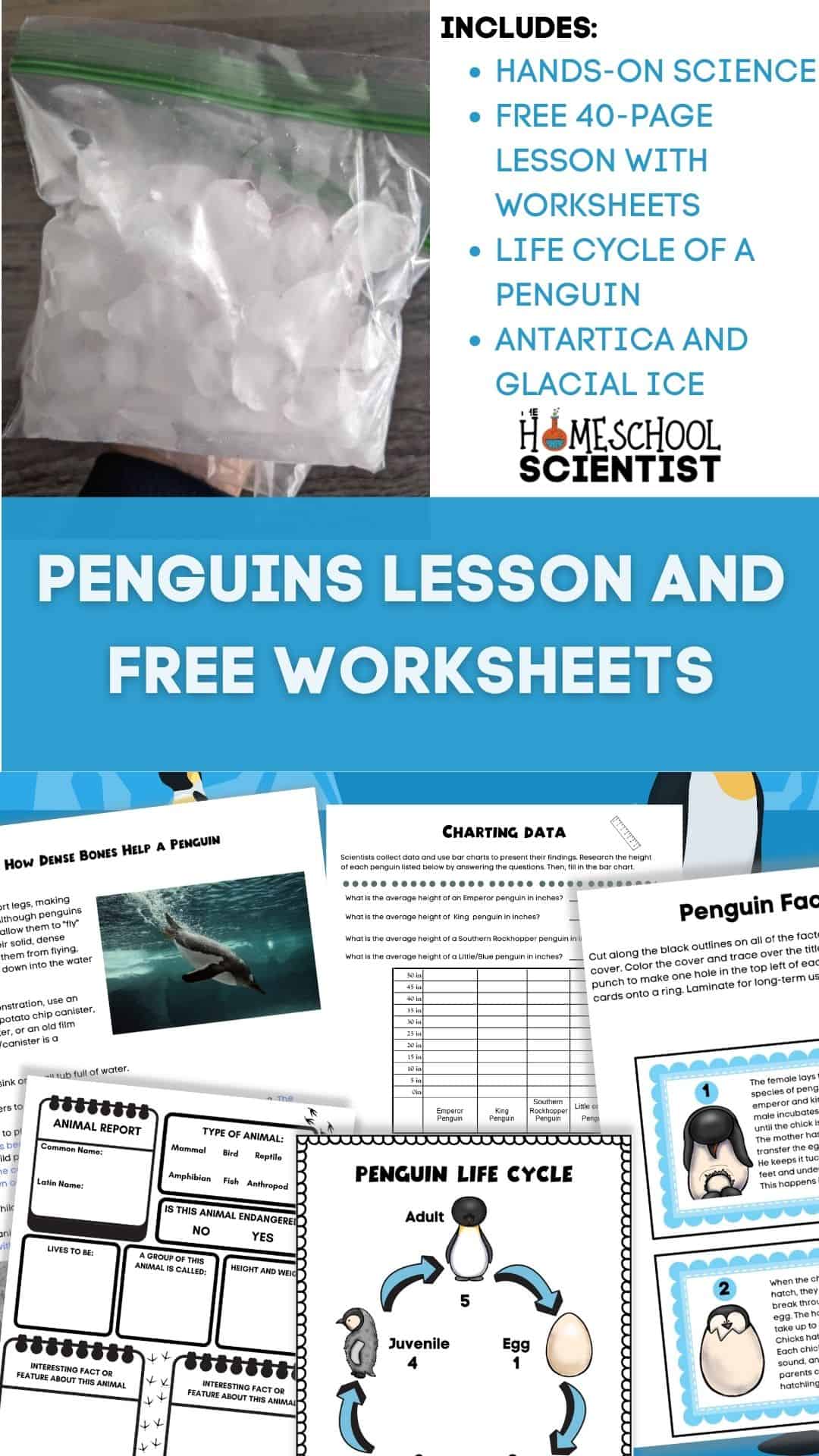
I hold a master’s degree in child development and early education and am working on a post-baccalaureate in biology. I spent 15 years working for a biotechnology company developing IT systems in DNA testing laboratories across the US. I taught K4 in a private school, homeschooled my children, and have taught on the mission field in southern Asia. For 4 years, I served on our state’s FIRST Lego League tournament Board and served as the Judging Director. I own thehomeschoolscientist and also write a regular science column for Homeschooling Today Magazine. You’ll also find my writings on the CTCMath blog. Through this site, I have authored over 50 math and science resources.



